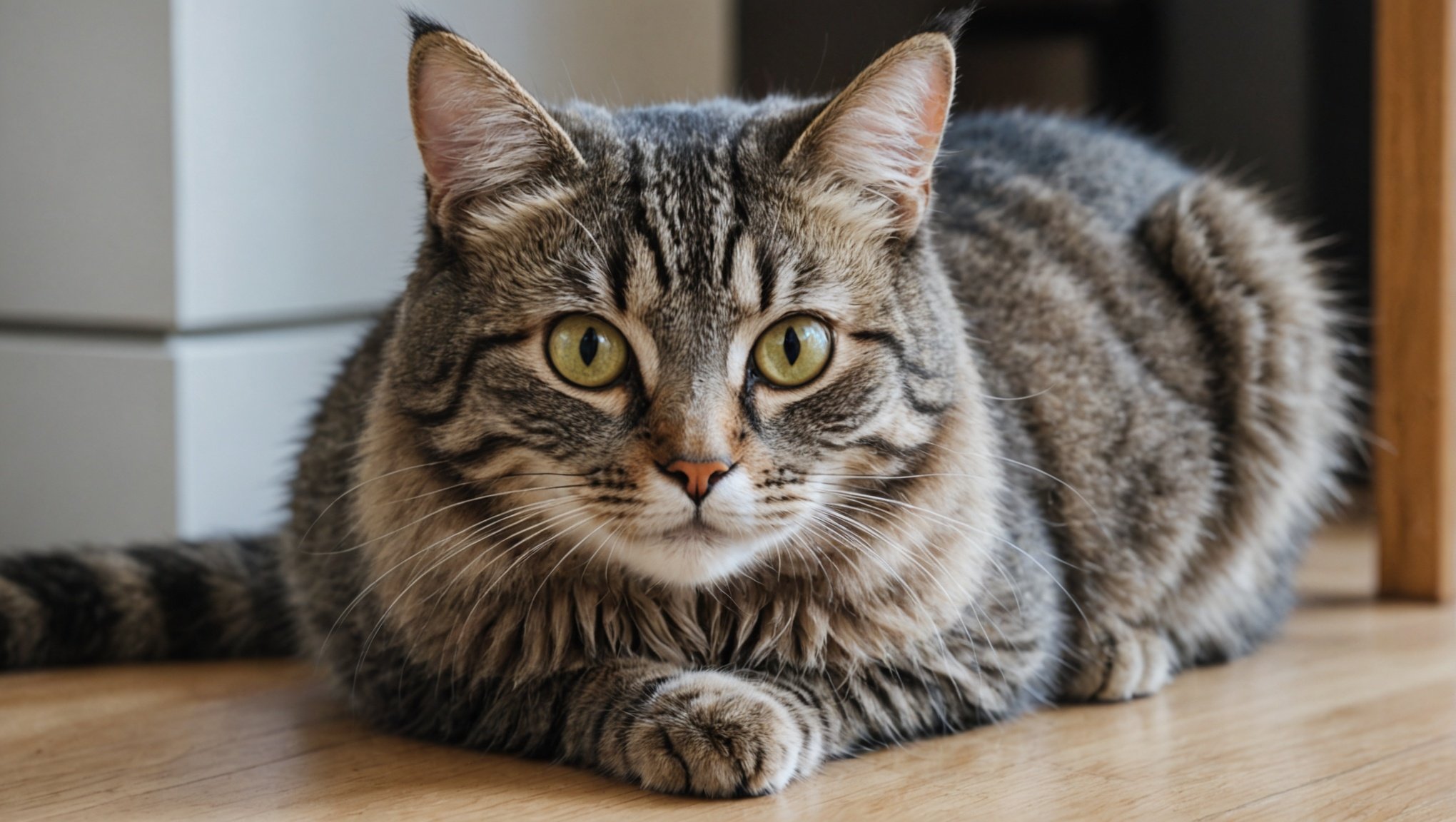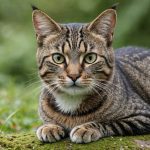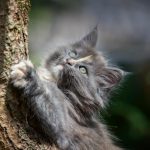Creating a safe and welcoming space for a visually impaired cat enhances their quality of life significantly. This guide offers practical safety tips and environmental modifications tailored to their unique needs. Simple changes can transform your home into a nurturing haven, from adjusting furniture layout to incorporating sensory cues. Understanding their challenges empowers you to provide the support they deserve, ensuring your feline friend thrives despite their visual limitations. Discover how easy it can be to make impactful adjustments that cater to their well-being.
Understanding Visual Impairment in Cats
Cats, like humans, can experience vision issues that affect their quality of life. Understanding these problems is crucial for ensuring their well-being. Visually impaired cats may suffer from conditions such as cataracts, glaucoma, or retinal degeneration. These ailments can stem from genetics, aging, or infections. Recognising the signs early can make a significant difference.
A lire en complément : Understanding and Managing Cat Separation Anxiety as Owners Resume Work in a Post-Pandemic World
Signs and symptoms of visual impairment in cats include bumping into objects, hesitation in navigating familiar spaces, and changes in behaviour such as increased vocalisation. A cat that seems disoriented or anxious in new environments may also be struggling with vision issues. Observing these symptoms can help in identifying if your cat is visually impaired.
Understanding your cat’s specific needs is vital for their comfort and safety. Cats rely heavily on their vision for exploring and interacting with their environment. If you suspect your cat has vision issues, consulting a veterinarian is essential. They can provide a proper diagnosis and recommend adjustments to your home to accommodate your cat’s needs. This might include rearranging furniture to create clear pathways or using textures and scents to guide your cat. By understanding and addressing these needs, you can significantly improve the quality of life for your visually impaired cat.
Sujet a lire : Unlocking Joy: Creative Ways to Keep Your Indoor Cat Mentally Engaged and Curb Boredom
Creating a Safe Home Environment
Ensuring home safety for cats is essential, especially for those with visual impairments. Identifying potential hazards within the home is the first step. Common dangers include sharp furniture edges, unstable objects, and electrical cords. These can pose significant risks, particularly for cats with limited vision.
To minimise these threats, consider implementing pet-proofing tips. Secure loose wires and cables to prevent entanglement. Use corner guards on sharp edges to avoid injuries. Keeping a clutter-free space is crucial for easy navigation. A tidy environment helps visually impaired cats move confidently without bumping into obstacles.
Additionally, creating a consistent layout is beneficial. Cats rely on memory to navigate, so avoid frequently rearranging furniture. Introduce new items gradually, allowing your cat time to adjust. Using different textures like rugs or mats can help guide your cat through rooms. Scent markers can also serve as navigational aids, providing familiar cues in their environment.
Finally, ensure that essential resources like food, water, and litter boxes are easily accessible. By focusing on these strategies, you can create a secure and comfortable home for your visually impaired cat, enhancing their quality of life and independence.
Modifying Your Cat’s Living Space
When adapting your home for a visually impaired cat, environmental modifications are crucial. Creating cat-friendly spaces begins with thoughtful layout changes to improve accessibility. Ensuring that furniture is consistently placed can significantly aid your cat’s navigation. Cats rely on memory, so frequent changes can lead to confusion and anxiety.
Start by evaluating your home’s layout. Identify areas where your cat frequently travels, such as paths to food or litter boxes. Make sure these routes are clear of obstacles and easy to follow. Creating clear pathways can be as simple as aligning furniture to guide your cat along familiar routes, reducing the risk of collisions.
Consistent furniture placement is essential. Once your cat learns the layout, avoid moving items unnecessarily. This stability provides a sense of security and confidence for your cat. If changes are unavoidable, introduce them gradually, allowing your cat to adjust at their own pace.
Consider adding tactile cues to assist navigation. Different textures on floors, like rugs or mats, can signal different areas or boundaries. This can help your cat understand their environment better. By making these environmental modifications, you create a safe and supportive home, enhancing your cat’s independence and well-being.
Installing Tactile Cues
Enhancing your cat’s environment with tactile cues can greatly assist in their navigation, especially for those with visual impairments. These sensory enhancements provide crucial orientation and guidance.
Consider using a variety of tactile cues for pets. Rugs and mats are excellent options, offering different textures that can signal specific areas or paths. For instance, placing a soft rug near the feeding area can help your cat recognise its location. Similarly, a textured mat by the litter box can serve as a reliable marker.
Textures play a vital role in guiding your cat. Cats use their paws to feel the ground, and distinct surfaces can indicate boundaries or transitions between rooms. This method not only aids in orientation but also boosts your cat’s confidence in moving around.
Effective tactile cues include using mats with raised patterns or different materials. These can be strategically placed at doorways or at the start of staircases. Such cues act as reminders and help your cat anticipate changes in their path.
By incorporating these sensory enhancements, you create a more navigable and secure environment for your visually impaired cat, promoting their independence and well-being.
Selecting Appropriate Furniture
Creating a comfortable and accessible environment for your visually impaired cat involves selecting cat-friendly furniture. Prioritising accessible pet furniture ensures your cat can easily navigate their surroundings without unnecessary challenges.
When choosing furniture, consider items that are low to the ground and stable. This makes it easier for your cat to climb and explore without the risk of injury. Opt for furniture with wide bases to prevent tipping. Stability is crucial for your cat’s confidence and safety.
Secure perches are essential for cats who enjoy elevated views. Look for perches with non-slip surfaces and sturdy construction. This provides a safe space for your cat to relax and observe their environment, fulfilling their natural instincts.
Consider furniture with features that cater to sensory needs. Textured surfaces can aid navigation, while soft materials offer comfort. Cat trees with ramps or gentle slopes are ideal, allowing for easy access to different levels.
Incorporating cat-friendly designs not only enhances your cat’s quality of life but also maintains their independence. By thoughtfully selecting furniture, you create a supportive home environment that allows your visually impaired cat to thrive.
Ensuring Safe Outdoor Exploration
For visually impaired cats, outdoor safety is paramount. Supervised outdoor access allows them to enjoy nature while remaining secure. Strategies for safe outdoor time include using a leash or harness. These tools provide control and prevent your cat from wandering into dangerous areas. A harness should fit snugly but comfortably, ensuring your cat cannot slip out.
Creating a secure outdoor space is another excellent option. Catios or enclosed areas offer a safe environment for exploration. These structures protect your cat from potential hazards like traffic and predators, while still allowing them to experience the outdoors. Ensure the enclosure is escape-proof and provides ample space for movement and exploration.
Supervision is crucial during outdoor activities. Always keep a watchful eye on your cat to respond quickly to any signs of distress or disorientation. Structured exploration, such as guided walks or playtime, helps build confidence and familiarity with the environment.
By focusing on outdoor safety for cats and providing supervised outdoor access, you enhance their quality of life. These measures not only ensure their safety but also offer enriching experiences, promoting overall well-being and happiness.
Utilizing Sound and Smell
Enhancing your cat’s environment with sensory cues can significantly aid their navigation, especially for those with visual impairments. Auditory cues are crucial in helping cats orient themselves. Consider using sound-based toys that emit gentle noises, such as jingling bells or rustling materials, to guide your cat through their space. These sounds can serve as beacons, helping your cat locate key areas like feeding stations or resting spots.
In addition to sound, scents play a vital role in creating familiar zones. Using distinct scents in different areas of your home can help your cat identify and remember specific locations. For example, placing a lavender sachet near their bed or a citrus scent by the litter box can establish clear olfactory markers.
Recommendations for sound-based devices include interactive toys that respond to touch or movement, providing both stimulation and guidance. These devices not only entertain but also encourage exploration and exercise.
By incorporating these sensory cues for cats, you create a more navigable and enriching environment. This approach not only enhances your cat’s independence but also ensures they can confidently move around their home, improving their overall well-being.
Training and Encouragement Techniques
Training a visually impaired cat requires patience and understanding, yet it can be incredibly rewarding. Implementing effective cat training tips is essential to help your feline friend navigate their environment confidently. Consistency is key. Regular, structured sessions ensure your cat becomes familiar with their surroundings and routines, building their confidence over time.
Positive reinforcement for cats is a powerful tool in training. Using treats as rewards encourages desired behaviours. When your cat successfully navigates a space or responds to a cue, reward them immediately with a treat. This creates a positive association, reinforcing their actions.
Verbal cues also play a significant role in guiding your cat. Consistent, gentle words or sounds can signal specific actions or areas. For instance, a soft “here” can guide them to their food bowl. Over time, your cat will associate these cues with certain tasks or locations.
Encouraging exploration is vital. Create a safe environment where your cat feels secure to roam and discover. Use treats to entice them into new areas, gradually building their comfort and curiosity. By employing these cat training tips and focusing on positive reinforcement for cats, you foster a supportive atmosphere that enhances your cat’s independence and well-being.
Monitoring Your Cat’s Well-being
Ensuring your cat’s health involves regular health monitoring for cats. Scheduling routine check-ups with a veterinarian is crucial. These visits help detect any underlying issues early, allowing for timely intervention. Regular assessments ensure your cat remains in optimal health and any necessary adjustments to their care can be made.
Observing behaviour changes is equally important. Pay attention to shifts in your cat’s habits or activity levels. Notice if they become less active, show reluctance to move, or exhibit unusual behaviors. Such changes can be indicators of discomfort or health issues. Early recognition of these signs can lead to prompt veterinary consultation and treatment.
Adapting to your cat’s evolving needs is vital for their well-being. As cats age or experience changes in health, their requirements may shift. Adjust their environment and care routines to accommodate these changes. This might include modifying their diet, providing additional support for mobility, or altering their living space to enhance comfort.
By focusing on health monitoring for cats and being attentive to observing behaviour changes, you can ensure your cat’s well-being. This proactive approach allows you to address any concerns promptly, maintaining their quality of life and happiness.
Personal Anecdotes and Expert Advice
Navigating life with a visually impaired cat can be a unique journey, filled with both challenges and rewards. Many pet owners share cat care stories that highlight their experiences and the adaptations they’ve made. One owner recounts how using textured rugs helped their cat navigate the home, turning potential obstacles into familiar paths. These personal anecdotes provide invaluable insights into creating a supportive environment.
Veterinarians and pet care experts offer expert tips for pet owners, emphasising the importance of consistency and patience. Dr. Jane Thompson, a renowned veterinarian, advises maintaining a stable home layout and using scent markers to aid navigation. These expert insights guide owners in making informed decisions that enhance their pet’s quality of life.
Beyond individual efforts, community resources and support networks play a crucial role. Online forums and local pet groups offer a platform for sharing experiences and advice. These communities provide emotional support and practical solutions, fostering a sense of belonging among pet owners facing similar challenges.
By combining personal experiences with professional guidance, pet owners can create a nurturing environment for their visually impaired cats, ensuring they lead fulfilling and happy lives.
















